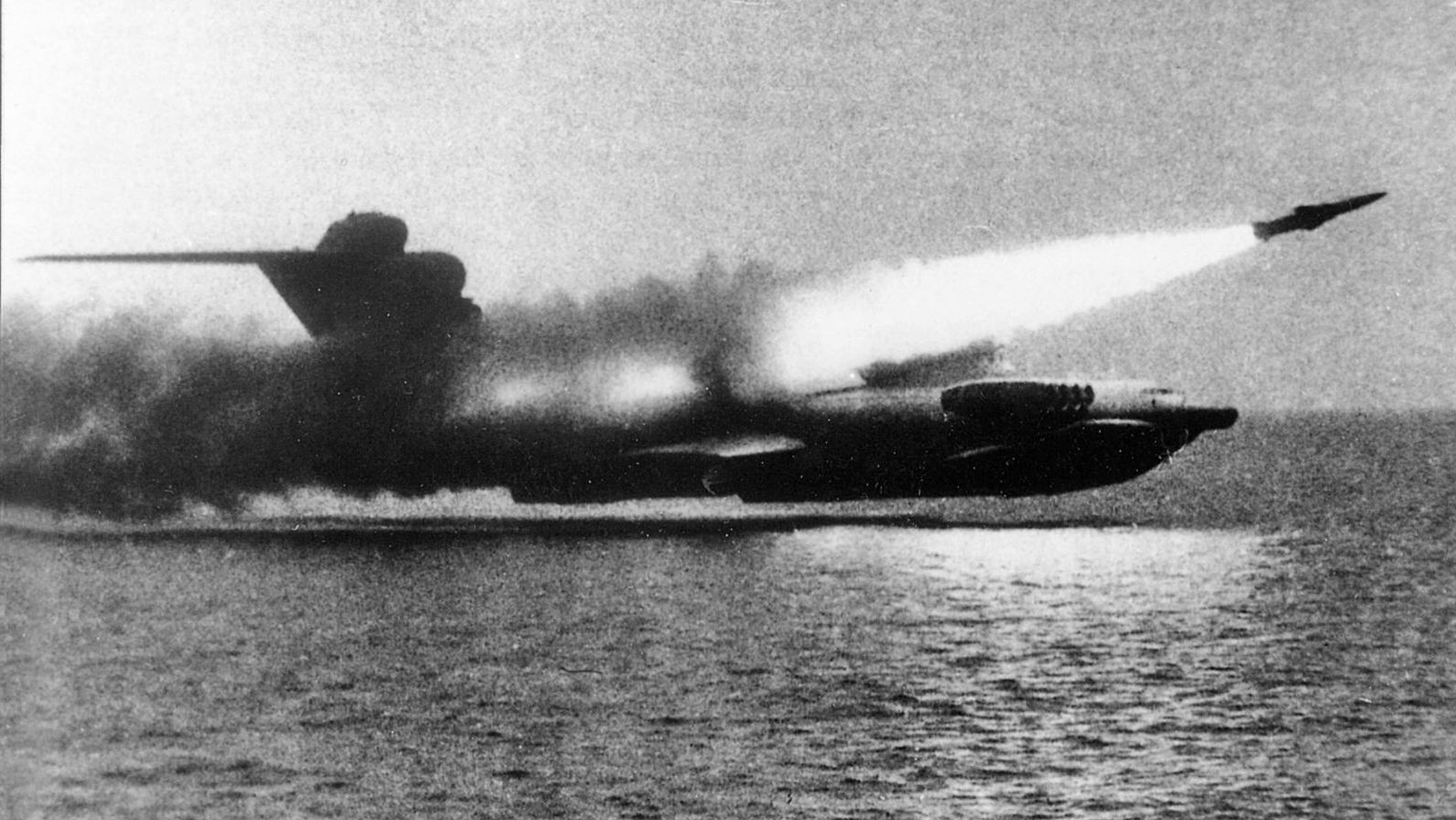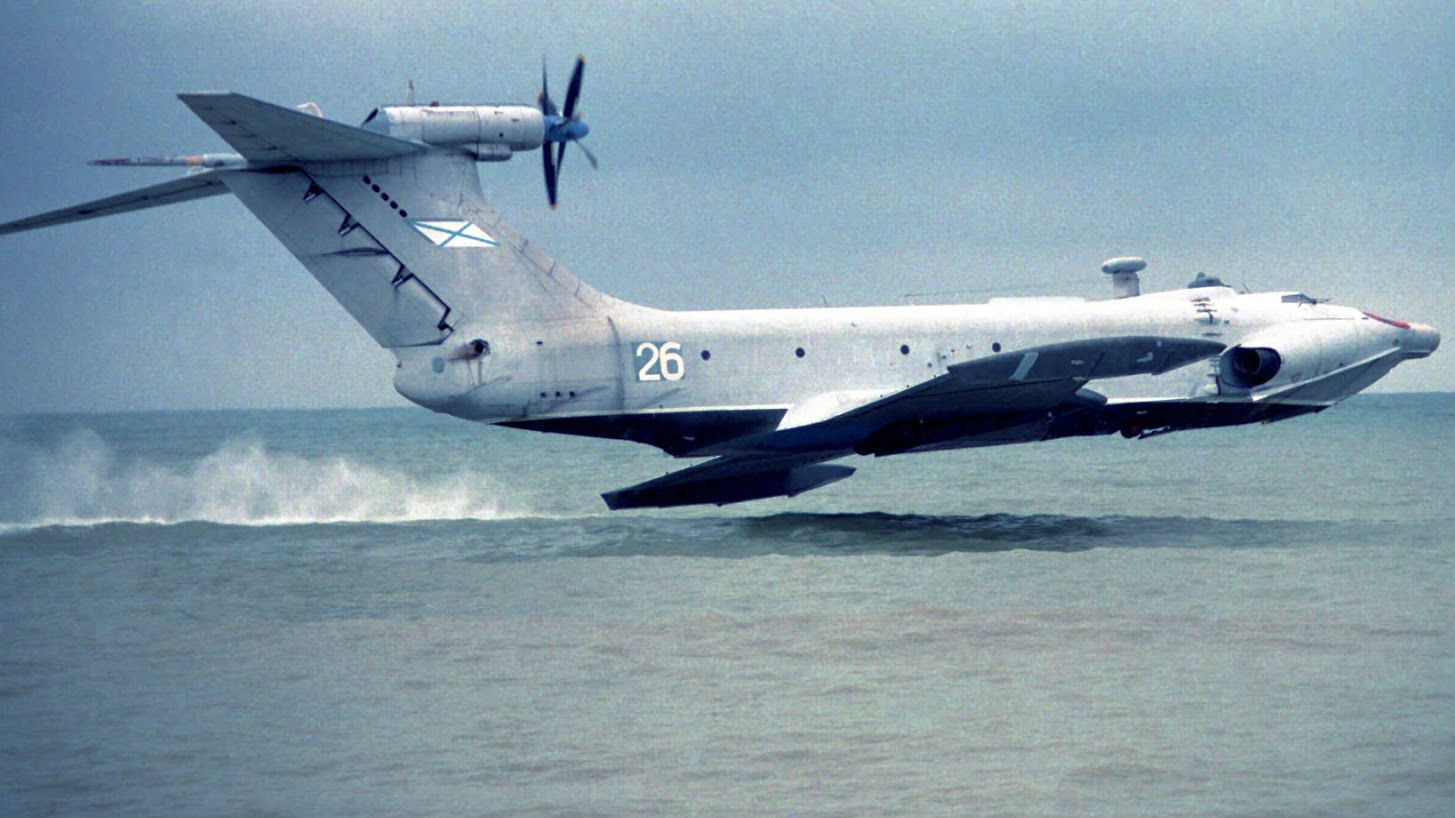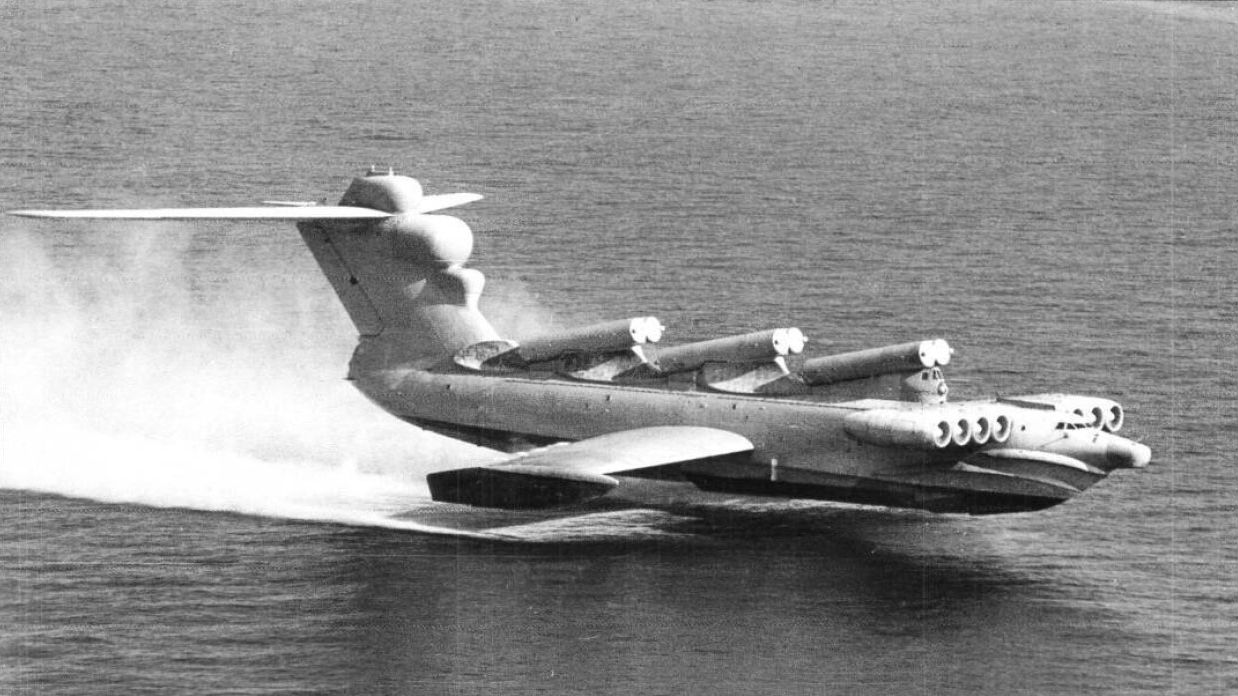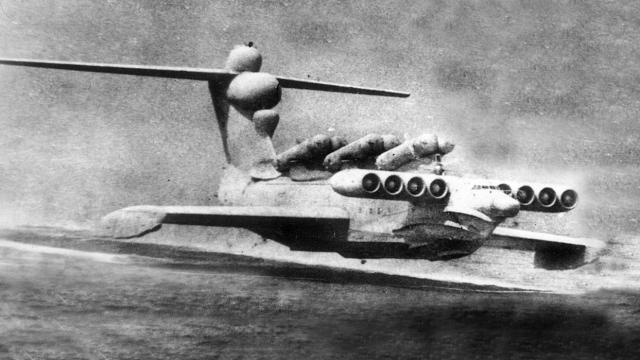Soviet engineering is often derided as effective but crude and simplistic, but that’s a bum rap. The USSR produced a number of technologies that were as visually arresting as they were effective. Just look at the sleek, humongous, flying hammerhead named Ekranoplan.
The Lun-class (“Harrier”) Ekranoplan is a ground-effect vehicle, that is, one that takes advantage of the increase in lift and decrease in drag that flying close to a fixed surface provides — typically within 4m or less. These craft were created by famed engineer Rostislav Evgenievich Alexeev at the Soviet Central Hydrofoil Design Bureau in the late 1980s. The only unit to be actually produced actively served in the Russian Army and Navy for over a decade beginning in 1987.
The MD-160, dubbed the “Caspian Sea Monster” by US Intelligence services, was indeed one of a kind. This massive 136kg seaplane measured 73m long and 19m tall with a 44m wingspan — that’s longer than the Spruce Goose and bigger than many modern commercial airliners. It was capable of carrying up to 124 tonnes of troops and equipment — including as many as six nuclear missiles — at speeds up to 560km/h as far as 2000km — albeit only 5m off the surface of the water. Eight Kuznetsov 128.9kN NK-87 turbofans mounted on the front cannards provided the thrust to get the seaplane’s hull up and out of the water and engage the ground effect.

While ground-effect vehicles are a highly efficient way to transport cargo over long distances, the MD-160 had significant drawbacks in its military applications. For one thing, the plane manoeuvred about as gracefully as a drunk cow lost on a tilt-a-whirl. Anything resembling a sharp turn was right out, and allowing a wing tip to even sniff the water could result in 500 tonnes of seaplane cartwheeling along the surface of the Caspian. And since the ground effect didn’t actually take effect until the plane was out of the water, the MD-160 had to always take off into the wind, like a bird does.

So while the MD-160 was thoroughly impervious to subsurface mines and torpedoes, its hulking size and complete lack of manoeuvrability made the planes sitting ducks against Western air forces (hence its NATO designation: Duck), often requiring armed escort and forward scouting boats to avoid obstacles. The Ekranoplan wasn’t completely helpless, however. It carried anti-ship P-270 Moskit guided missiles in six pairs mounted onto its fuselage as well as a pair of 23mm Pl-23 cannons in a tail turret and forward-facing pair under the forward missile tubes.

Despite the the MD-160’s shortcomings, Soviet high command continued to move forward with the program right up until the Soviet Union fell. A second MD-160, destined to be a mobile field hospital, was 90 per cent complete and another 30 A-90 Orlyonok GEVs, meant to strengthen the Black Sea Fleet, were on order when the program’s funding was cut. The MD-160 currently resides at a naval station in Kaspiysk. [Vince Lewis – Wiki 1, 2]
